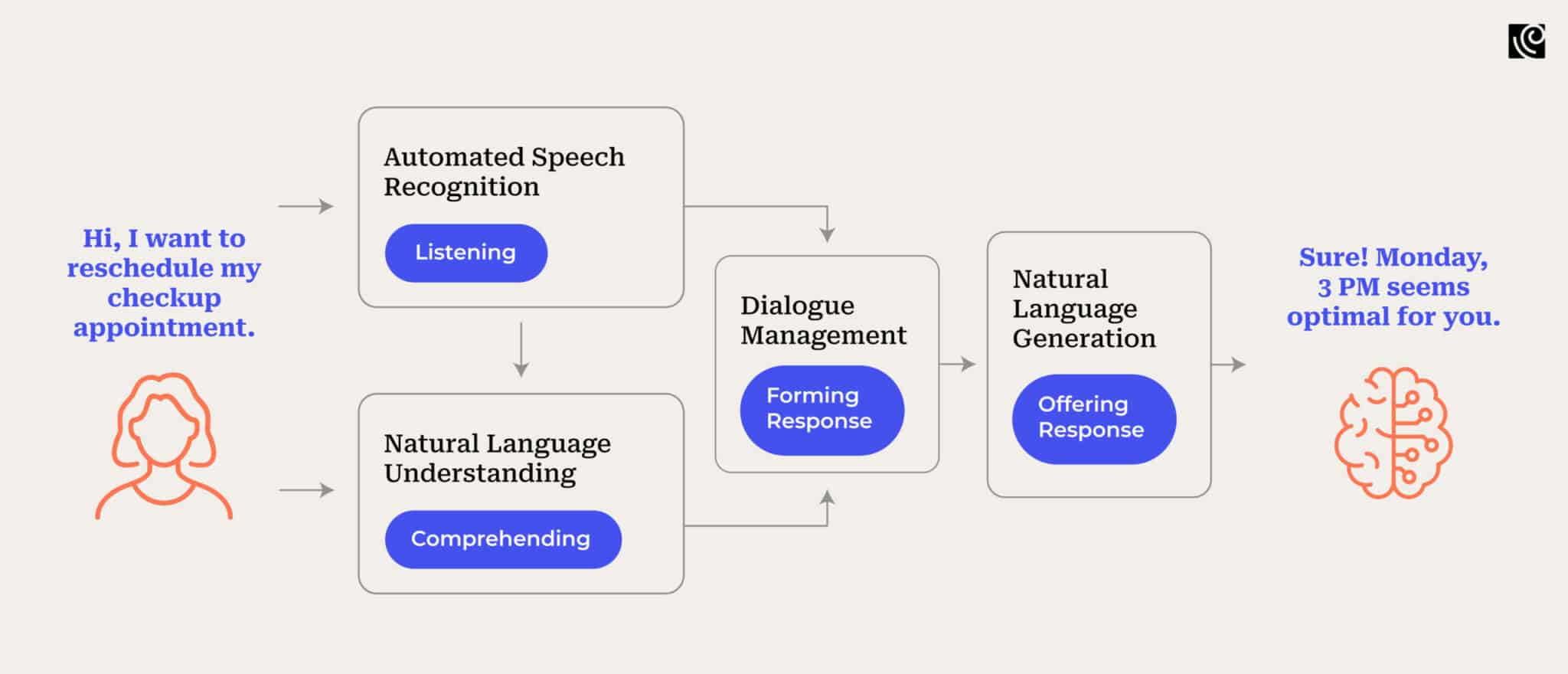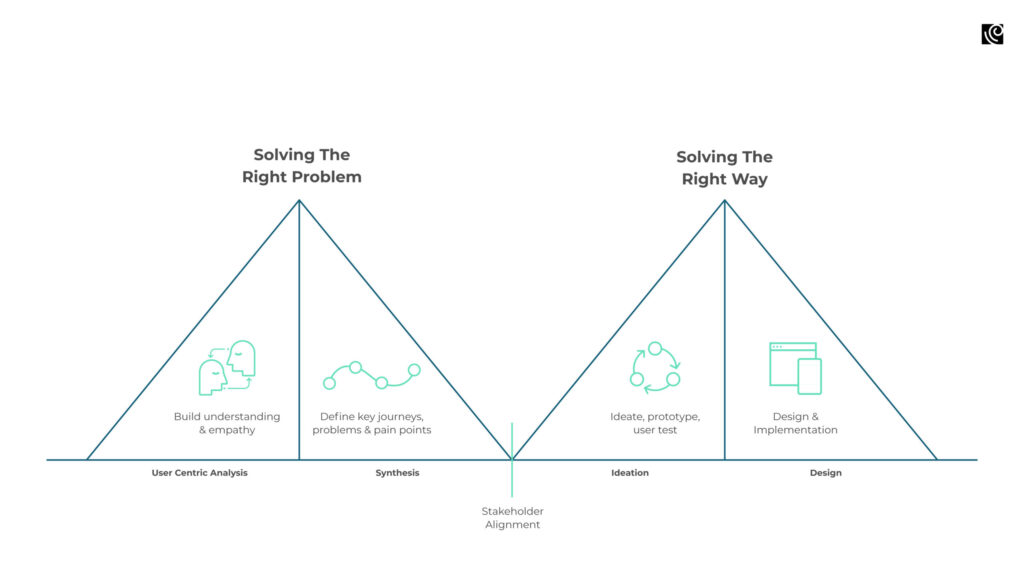Fancy a neat game of Dungeons and Dragons with none else than Snoop Dogg as your Dungeon Master? It could be a reality soon enough, going by what the overlords at Meta seem to believe.

This is Meta’s take on conversational AI, wherein a few months ago the company soft-launched a barrage of celebrity look-alike “AI Assistants”. Users of WhatsApp, Messenger, and Instagram can send messages and chat with these topic-specific chatbots. The idea is that users will be able to engage with these characters for specific purposes, like learning a new skill or exploring a certain interest.
But if this seems a little too Black Mirror for your liking, you aren’t alone.
What is Conversational AI?
Conversational AI is a technology that allows humans to communicate via digital interfaces in ways that mirror human-human interaction. This interaction might happen commonly over voice or text chat, but it extends beyond these to any of the ways a human might interact with an interface to get a response—i.e. a conversation.
According to IBM’s Watson,
Conversational artificial intelligence (AI) refers to technologies, like chatbots or virtual agents, that users can talk to. They use large volumes of data, machine learning, and natural language processing to help imitate human interactions, recognizing speech and text inputs and translating their meanings across various languages.
How Does Conversational AI Technology Work?
Driven by underlying machine learning and deep neural networks (DNN), a typical conversational AI flow looks like-

Conversational AI captures user inputs; break down, process, and understand them; and generate a meaningful response naturally—all within microseconds. This is possible because conversational AI combines NLP with machine learning (ML) to continuously improve AI algorithms.
Designing a conversational AI starts with mapping the following 3 elements –
Intent refers to the capacity to identify the important verb in a sentence. The way people ask questions has to be understood; the same thing can be asked in thousands of different ways.
Entities refer to grammar units such as names, time, synonyms, etc. For example, “Share MRI reports with Dr Phil” is a sentence from which three variables (share – report – with doctor) need to be extracted and sent to the backend.
And finally, Context. Our understanding of each other is based on a range of observations and assumptions that provide context. Reaching a satisfactory level in context takes time and requires life-long retraining of the AI model.
The basic process for designing the UX of conversational AI is the same as designing any virtual experience. For instance, we designed a Smart Assistant to reduce post-discharge hospital readmissions. This module was a blend of human and Intelligent Assistance to orchestrate seamless patient care in post-discharge scenarios. Its UI harnessed the power of NLP to deliver seamless assistance without overwhelming patients and clinicians.

The design process, quite like any other, begins with conducting user research to understand their needs, behaviors, and preferences.
Next, we created user personas based on the research data. These personas aligned with the workflow, the primary functions followed by the users, and their pain points.
We created a sample flow mapping out the dialogue occurring between the AI assistant and the user. This included developing a conversation structure based on user research and personas.

Once the initial design was complete, we conducted usability testing iteratively to ensure the prototypes met the desired objectives.
You can read the complete case study here.
The process of designing conversational AI is iterative – designers continuously collect and analyze user feedback and data to refine and improve the conversation flow and user experience over time.
Conversation design is the crucial cog in ensuring authentic communication between humans and bots. Achieving that level of seamlessness requires leveraging appropriate AI technologies that enable human-like interaction and delivering responses that align with the user’s intentions. Of course, that isn’t enough. Empathy is a key driver of conversation design.
Understanding and empathy towards your users’ needs, concerns, and emotions can help tailor conversations to individual user preferences, histories, and contexts. Persuasive techniques, such as choice of language, sentence structure, and soothing tone can influence user behavior and drive desired actions.
What does the future look like for Conversational AI?
Wouldn’t it be awesome to live in a world where you simply tell your AI assistant to schedule your doctor’s appointment at an optimal time, with zero hassles for both parties? The chatbots we have today cannot fulfill such a request because they are designed to handle only basic queries and respond based on pre-defined rules. As a result, they fail to understand user intent making the user experience inefficient and frustrating.
Points to Consider When Designing Conversational AI for the Future

Conversational AI Use Cases: The Enterprise Version
This comes as no surprise – conversational AI has been steadily gaining traction in recent years. From virtual assistants in healthcare to predictive maintenance in manufacturing, these intelligent systems are looking to shake the foundations of passive chatbots, allowing companies to focus on creating lasting business value.
Users will go beyond typing in keywords and phrases and instead have a natural conversation with their devices. More importantly, they will receive sophisticated and helpful responses and relevant results. Here are a few use cases –
Smart customer support and service
Chatbots powered by conversational AI will effectively automate customer support, reducing the load on IT support representatives and providing a cost-effective solution for businesses. Smart systems can be deployed to monitor a customer’s activity and analyze their behavioral data to identify patterns and trends. It will allow businesses to anticipate and address customer needs before they even arise. This can help reduce customer frustration and improve overall satisfaction.
HSBC’s Amy is a smart assistant helping clients at every step of their journey, onboards them, and efficiently resolves queries related to managing their banking accounts.
Nordstrom’s AI-powered Analytical Platform (NAP) is designed to gain deeper insights into its customers’ activities and to provide predictions for delivering more personalized experiences for its customers. It also helps the company manage inventory, navigate the fulfillment process, and route orders to the nearest store for customers, among other applications.
Conversational AI-led search engines
The applications of conversational AI transcend simple grammatical analysis to interpret the user’s intended action or query. These could be spotting requests for information, altering purchase transactions, or any other user objectives. Moreover, conversational AI search engines can identify crucial details within the query, such as product names, dates, or geographical locations, referred to as ‘entities’, and provide accurate and helpful responses.
Conversational search engines such as Ayraa.io allow users to interact with the search engine conversationally, using natural language. Ayraa has been custom-built for publishing knowledge and discovering insights across the workspace based on the knowledge it has gathered from your company’s corpus.
AI-powered recruiting
Hiring processes can be tedious – from screening resumes, matching candidates with best-suited roles, and performing initial assessments, to making contact with selected candidates. It is becoming increasingly common for organizations to reduce the manual labor involved in hiring.
Unilever partnered with Pymetrics to build an online platform that can assess candidates over video software for the 1.8 million-plus job applications it receives each year. It has candidates answer questions for 30 minutes while the software analyzes their body language, facial expressions, and word choice using NLP and body language analysis technology, thereby speeding up the process and time-to-hire.
Administrative task automation
Conversational AI fits right into workflows in any industry facing a shortage of human resources. Be it healthcare institutions where workers needed swift access to patient records, status monitoring, or request processing, to supply chains that are constantly scanning systems, networks, and processes for inefficiencies or disruptions – conversational AI comes to the rescue.
Enterprise organizations have a great potential to employ conversational and generative AI to monitor, maintain, and keep their services up and running and available for customers. For companies that offer round-the-clock digital services, using AI can help identify problems before they start, while also reducing instances of human error.
By 2030, the global conversational AI market size is projected to reach $32.62 billion. We’re in an age where efficiency, customer engagement, and data-driven decision-making are paramount. It goes without saying that conversational AI is a transformative force across multiple industries.
Are you to amplify your product’s UX with cutting-edge AI integration? We will leverage our decade-long expertise to guide you through seamless integration and optimization – the time is right now!










